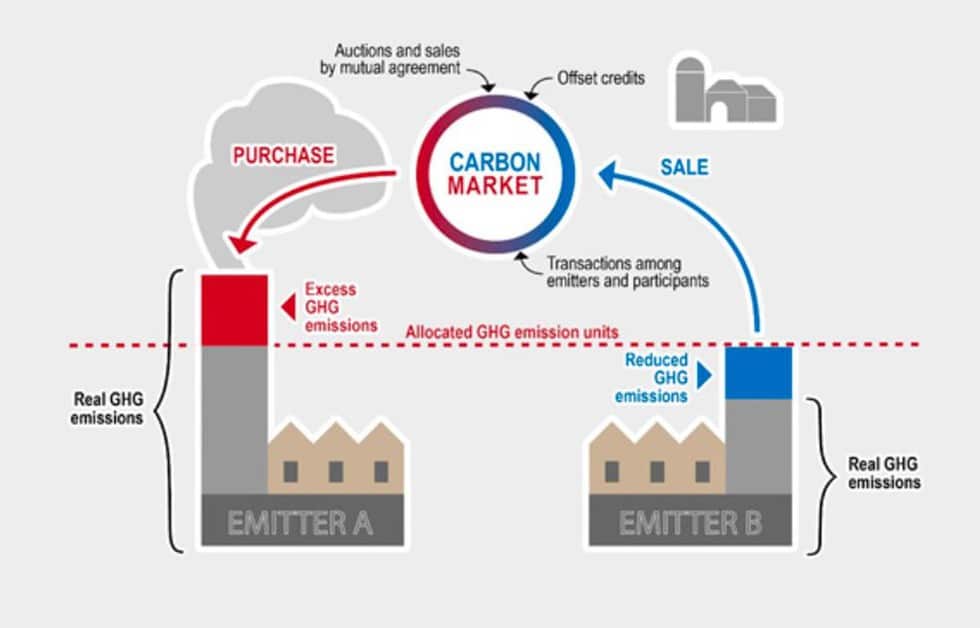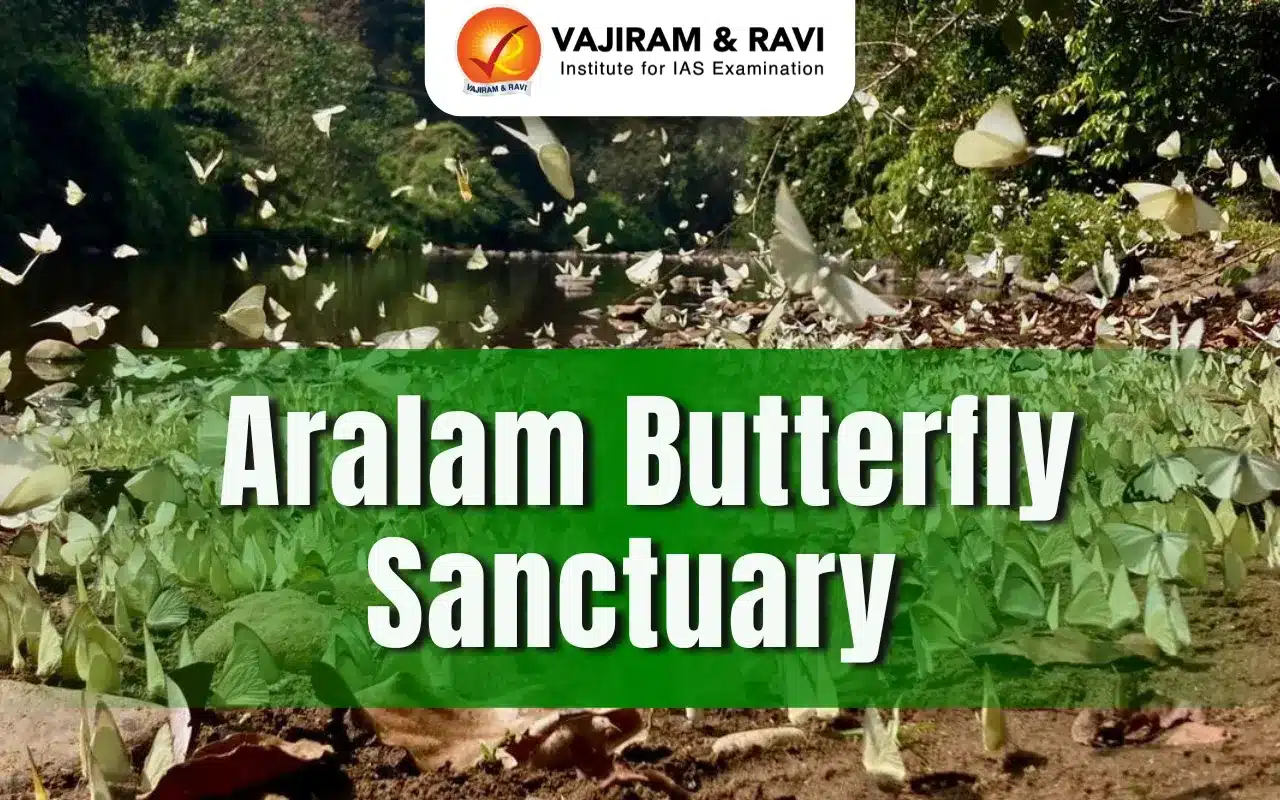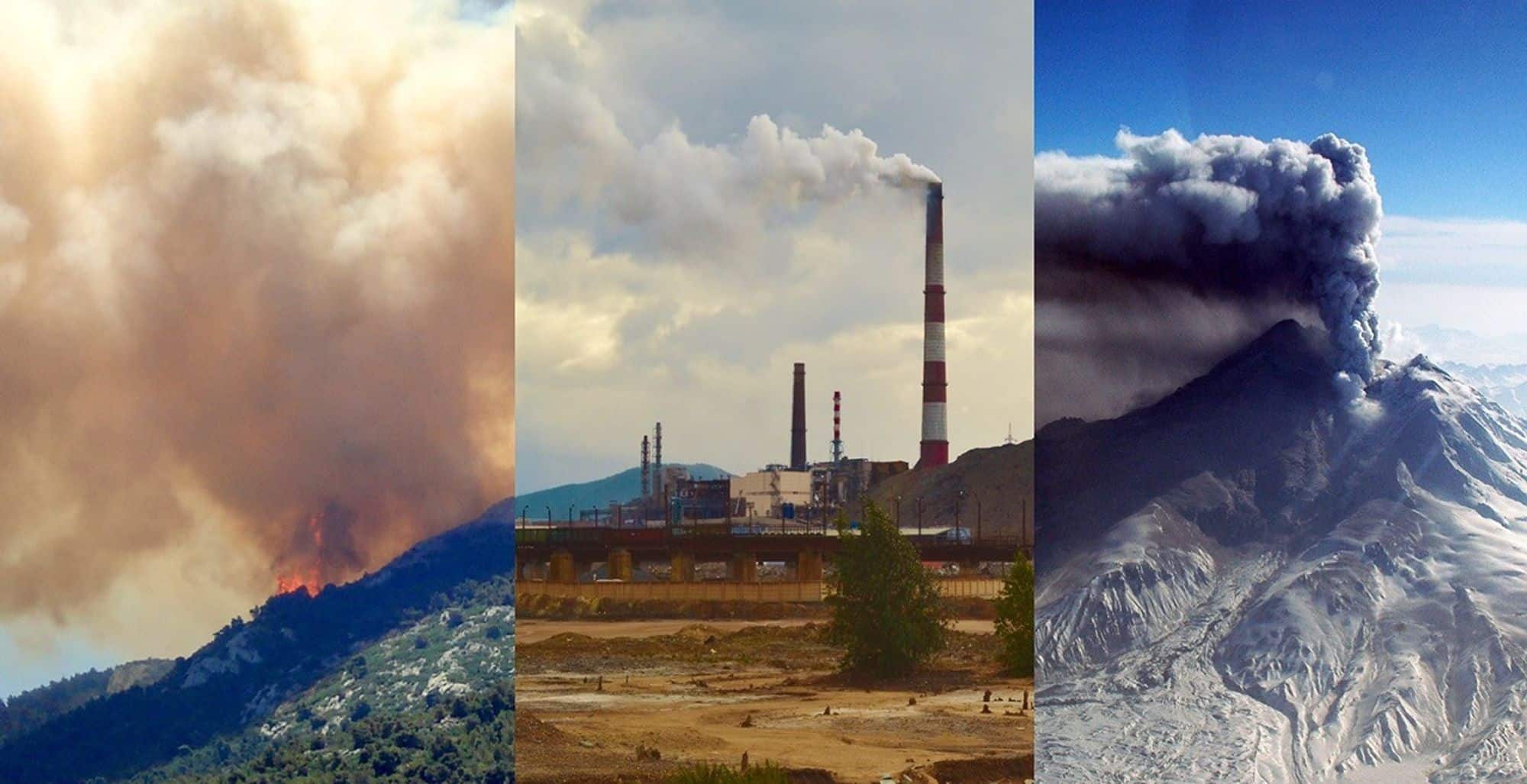What are carbon markets?
- Article 6 of the Paris Agreement provides for the use of international carbon markets by countries to fulfil their nationally determined contributions (NDCs).
- Carbon markets are essentially a tool for putting a price on carbon emissions— they establish trading systems where carbon credits or allowances can be bought and sold.
- A carbon credit is a kind of tradable permit that, per United Nations standards, equals one tonne of carbon dioxide removed, reduced, or sequestered from the atmosphere.
- Carbon allowances or caps, meanwhile, are determined by countries or governments according to their emission reduction targets.
- A United Nations Development Program released recently noted that interest in carbon markets is growing globally, i.e, 83% of NDCs submitted by countries mention their intent to make use of international market mechanisms to reduce greenhouse gas emissions.
What are the types of carbon markets?
- There are broadly two types of carbon markets:
- compliance markets and
- voluntary markets
Voluntary markets:
- Voluntary markets are those in which emitters— corporations, private individuals, and others— buy carbon credits to offset the emission of one tonne of CO 2 or equivalent greenhouse gases.
- Such carbon credits are created by activities which reduce CO 2 from the air, such as afforestation.
- In a voluntary market, a corporation looking to compensate for its unavoidable GHG emissions purchases carbon credits from an entity engaged in projects that reduce, remove, capture, or avoid emissions.
- For Instance, in the aviation sector, airlines may purchase carbon credits to offset the carbon footprints of the flights they operate. In voluntary markets, credits are verified by private firms as per popular standards. There are also traders and online registries where climate projects are listed and certified credits can be bought.
Compliance markets:
- Compliance markets— set up by policies at the national, regional, and/or international level— are officially regulated.
- Currently, compliance markets mostly operate under a principle called ‘cap-and-trade”, most popular in the European Union (EU).
- Under the EU’s emissions trading system (ETS) launched in 2005, member countries set a cap or limit for emissions in different sectors, such as power, oil, manufacturing, agriculture, and waste management.
- This cap is determined as per the climate targets of countries and is lowered successively to reduce emissions.
- Entities in this sector are issued annual allowances or permits by governments equal to the emissions they can generate.
- If companies produce emissions beyond the capped amount, they have to purchase additional permit, either through official auctions or from companies which kept their emissions below the limit, leaving them with surplus allowances.
- This makes up the ‘trade’ part of cap-and-trade.
Q1) What are India’s nationally determined contributions?
As per the updated NDC, India now stands committed to reduce Emissions Intensity of its GDP by 45 percent by 2030, from 2005 level and achieve about 50 percent cumulative electric power installed capacity from non-fossil fuel-based energy resources by 2030. The updated NDC also represents the framework for India’s transition to cleaner energy for the period 2021-2030.
Source: Explained | What are carbon markets and how do they operate?
Last updated on January, 2026
→ Check out the latest UPSC Syllabus 2026 here.
→ Join Vajiram & Ravi’s Interview Guidance Programme for expert help to crack your final UPSC stage.
→ UPSC Mains Result 2025 is now out.
→ UPSC Notification 2026 is scheduled to be released on January 14, 2026.
→ UPSC Calendar 2026 has been released.
→ UPSC Prelims 2026 will be conducted on 24th May, 2026 & UPSC Mains 2026 will be conducted on 21st August 2026.
→ The UPSC Selection Process is of 3 stages-Prelims, Mains and Interview.
→ Prepare effectively with Vajiram & Ravi’s UPSC Prelims Test Series 2026 featuring full-length mock tests, detailed solutions, and performance analysis.
→ Enroll in Vajiram & Ravi’s UPSC Mains Test Series 2026 for structured answer writing practice, expert evaluation, and exam-oriented feedback.
→ Join Vajiram & Ravi’s Best UPSC Mentorship Program for personalized guidance, strategy planning, and one-to-one support from experienced mentors.
→ UPSC Result 2024 is released with latest UPSC Marksheet 2024. Check Now!
→ UPSC Toppers List 2024 is released now. Shakti Dubey is UPSC AIR 1 2024 Topper.
→ Also check Best UPSC Coaching in India

















